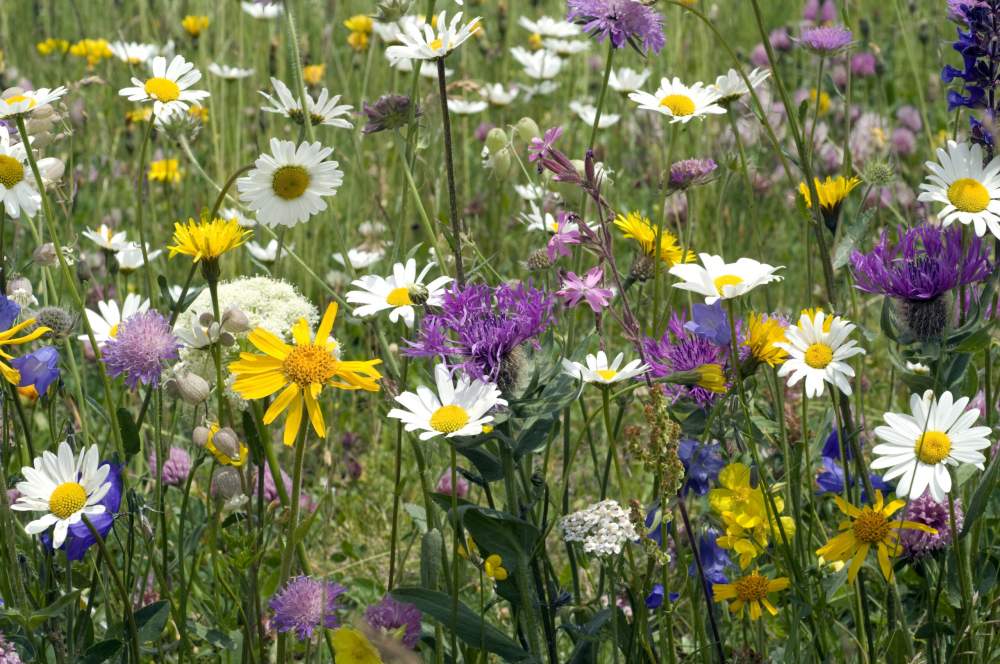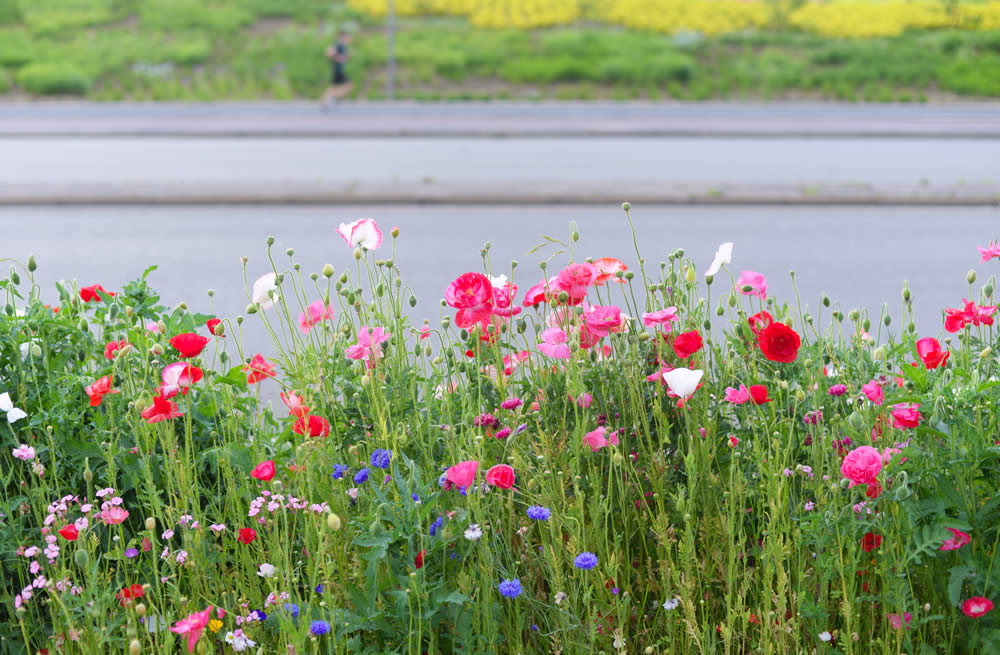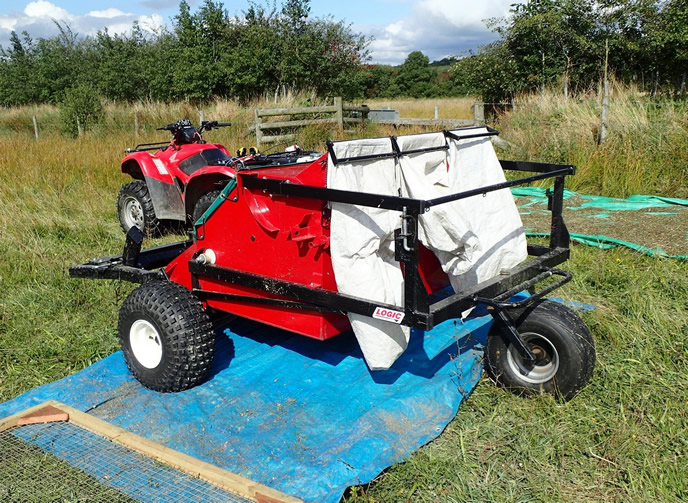Unlocking the Potential of Wildflowers: A Council Guide
People have been sowing wildflower meadows for centuries, but it’s only recently that their full potential has truly been unlocked. Local councils and other decision-makers know that wildflowers bring something unique to our outdoor spaces, providing food and shelter for wildlife, inspiring awe in passers-by, and anchoring local ecosystems.
What’s more, when done correctly, these meadows can require surprisingly little maintenance over time. Wildflowers offer many benefits to your local authority or town’s projects, but they don’t come without their challenges. It takes a bit of know-how, and the right wildflower seed mix, to get the most out of your meadow. Fortunately, we’re here to help.
In this guide, we’ll go step by step through how you can cultivate a thriving wildflower meadow with minimal effort and expense. Read on to learn all you need to know about unlocking the potential of wildflowers!
Choosing Seeds and Soils for the Best Growth
When it comes to deciding on the best seeds and soils to create a wildflower meadow that’s beautiful, viable and low maintenance, there are a few key considerations.
First, choose a mix of native meadow wildflower seeds suitable for your soil type, whether heavy clay or free-draining sand, to give you different heights and plants. The ideal combination will include annuals and perennials that flower for several months of the year.

You should also carefully pick your seeds, as some plants can become invasive if not managed over time. Look out for options like:
- Cornflower
- Evening Primrose
- Oxeye Daisy
- Red Clover
- Salad Burnet
- Yarrow
Finally, research local environmental agencies to learn about organic treatments that can boost soil fertility while promoting plant health harmoniously with local wildlife.
Planning Tips for Local Authorities, Town Councils, Parish Councils
If you’re a local authority, town council or parish council looking to introduce wildflowers, there are some essential planning tips to remember.
Location
One of the most critical considerations is location. Find the right spot with enough sunlight and the right soil type, as different wildflower species prefer other conditions. Make sure there’s sufficient hydration, drainage, and air circulation too.
Timing
Once you have your spot identified, timing is vital. Planting in late autumn or winter is best as this gives the wildflower seeds plenty of time to germinate and settle in before the summer season.
Seed Mixes
Your selection of seed mix is critical to success, including those that are native species and ones which are more tolerant to environmental pressures such as mowing and grazing by wildlife if applicable. It’s also helpful to consider seasonal variation; what will flower in spring? What about in summer? Working with a professional team can be a great way to access more specialist knowledge and advice.

Benefits of Wildflowers in Urban Areas
You may not know this, but wildflowers are far more beneficial in urban areas than you’d think.
Increased Biodiversity
Wildflowers create and maintain valuable habitats, supporting a wide range of species. In towns and cities, wildflowers can benefit birds, bees, pollinators, and other wildlife species that rely on healthy habitats. This can help boost biodiversity levels in your area, which is integral to local ecosystem health.
Natural Pollution Filter
Wildflowers are also incredibly good at filtering pollutants like dust particles from the air, making them a great natural way to clean up the air we breathe! Not only that, but their deep roots also absorb rainwater more efficiently than other common urban plants, such as grasses and shrubs, that cannot penetrate hard urban surfaces like pavements and roads.
So why should local authorities consider investing in wildflowers? Here’s what they bring to the table:
- Improved air quality
- More attractive landscape features
- Pollinator-friendly habitats
- Soil stabilisation
- Flood mitigation
Establishing and Maintaining a Wildflower Meadow
Creating and maintaining a wildflower meadow is an enriching experience that can have significant practical benefits. It can provide habitats for insects and birds, reduce noise pollution and improve air quality. Moreover, wildflowers look great, so it’s an ideal way to brighten up your local area.
Choose the right spot.
Wildflower meadows need plenty of space so their plants can spread out and bloom naturally. Select an area with the right soil conditions and enough light for the flowers to thrive.

Select the best seed mix.
Your local authority, town or parish council can select a seed mix adapted to your local climate, considering factors like soil type, pH levels, precipitation and other factors that can affect plant growth. Wildflower species prefer different soil types, so having this information makes it easier to select the correct mix for your needs.
Ensure soil preparation
Soil preparation before sowing is essential, it should be free from weeds, stones and debris, and you’ll also want to ensure it’s aerated by turning over the top few inches with a garden fork. Once that’s done, you’re ready to go!
Address the Biggest Issues: Pests and Weeds
One of the biggest issues when planting wildflowers is pests and weeds. Pests, such as aphids and slugs, can eat through your plants, and leaves, while weeds can choke out wildflowers and make them less effective.
Luckily, there are some steps you can take to address these problems:
Pests
To keep pests under control, you should use natural solutions and monitor them regularly. Here are a few suggestions on how to do that:
- Utilize beneficial insects like lacewings to consume the pests.
- Make a plan to identify areas where pest populations are proliferating and act accordingly using natural body sprays or organic containers of soap with water sprays in the early morning when dew is still visible during active pest seasons.
- To remove existing pests, use a vacuum cleaner (for soft-bodied ones) or tweezers (for hard-bodied ones).
- Weeds can spread quickly if not managed properly, so it’s essential to take action as soon as possible before they set up camp in your meadow. Here are a few tips for tackling them:
- Mowing at the start and end of the season and regular hoeing to prevent weeds from taking off in your meadow while still allowing vital nutrients like carbon dioxide (CO2) into the soil, which helps promote the healthy growth of wildflowers and other grasses that naturally occur there too!
Chemical Weed Killers
Sometimes it is necessary to use weed killers, but these should be used as a last resort and in a highly controlled way. We would always advise taking advice beforehand.
Wilder Councils - For the Benefit of Residents and Nature
Wildflower meadows and areas offer incredible potential for beautifying public spaces, providing habitats for wildlife and improving the environment in various ways. Whether you are a local authority, town or parish council, you can play a role in making the most of wildflowers in your community.
By following the advice in this guide, you can start your wildflower initiative and unlock the hidden benefits that wildflowers can bring. With the proper guidance, your wildflower projects can help to create vibrant and sustainable public places that are both beautiful and beneficial for the environment.


